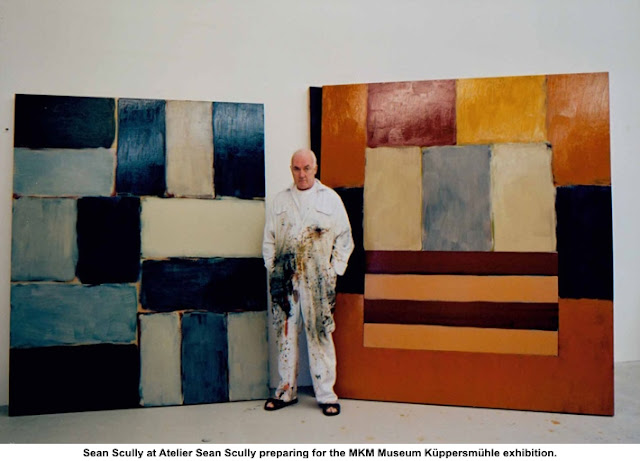Alright. So I just
recently had a whole bunch to say about Robert Jessup. After I said what I had to say, I
figured I would take a shot in the dark and send him an email letting him know
just what it was that I had been saying.
So now I have something else to say about Robert
Jessup. Dude is a gemstone. What a great guy. Robert got right back to me, both
thanking me for my interest and responding that he would be “delighted” to
answer some of my questions about his work.
A bulk of my questions centered around one bigger idea: “What is going on with the major switch in
stylistic choice that began in 2008?"
Looking through Robert’s work during this time period, it is clear to anyone that this artist was
making some major decisions about how to make a painting.
Check out these paintings:
2008
 |
| "Man Climbing a Cliff in the Mountains", 2008, 68 inches by 64 inches , oil on canvas |
2010
 |
| "Robert", 2010, 44 inches by 42 inches, oil on canvas |
2012
 |
| "Landscape with Two Figures" , 2012, 60 inches by 66 inches, oil |
Pretty clear, right?
“My work has changed drastically since
returning from a life-changing trip to Europe in 2008. I went with the intention
of learning from the techniques of the great Baroque masters, but I came back
fueled by a spirit of radical invention and expression. While my narrative
paintings had always been anchored in my ability to envision what I could remember
and imagine, I returned from this trip determined to not just envision, but to
become aggressively visionary. I wanted to reconfigure my imagined world,
to subvert what I knew and destroy what was comfortable. So I changed what I imagined.
Then I changed how I drew. Then I changed how I painted. Now, my drawing
is primarily directed by my capriciously impulsive, insouciant, and perverse
Line.”
In the studio:
Another
thing that I am thankful for is the dedication that was drilled into me at my alma mater, to straight up do
WORK in the studio. I think my parents can probably get in a bit on that
hard work and dedication thankfulness too, but I'm getting away from my point
here. Because of this beliefe that hard and steady work in the studio is so vital, I am strongly compelled to hear about
other artists’ studio practice. The variation from artist to artist is huge, but one thing seems
consistent and that is that the artists who go to the studio with consistency, and make SOMETHING,
even if it is terrible or unimportant, seem to be the most satisfied with their
efforts. I remember hearing Dana Schutz (post about her work from a
little while ago) answer questions about this during a talk she did at BU four
years ago; she sleeps in, gets coffee, makes her way to the studio in the
afternoon sometime, looks at things, preps for a while, breaks to eat, then
paints until about 4am. I could live like that. laxin laxin laxin WORK.
What a beautiful mess this pallet is!


A studio day for Robert is any day that he does not have a class over at the University of North Texas where he is a Professor of Drawing and Painting in the College of Visual Arts and Design.
"Sometimes, the painting sessions are fifteen minutes, sometimes they are three to four hours..." "I'm doing these little works on paper and when I don't feel quite up to the messy work of slogging around in the oil paint, I can make these little pictures. My table for doing them is set up in my studio, where I can look up and see the canvas that I'm working on. I usually only have one painting on canvas going at a time, but during the course of a painting, I may have several works on paper going. I also usually don't complete a work on paper in one sitting. I often have a fast start of one sort or another then leave it alone. Then I'll come back and respond to those first markings and try to advance the form and nascent imagery. Altogether, these little works probably take between two and four hours over a couple of days to bring to completion. The paintings proceed in much the same way, but over a longer period of days and sessions. Most paintings, though, have always been completed in a week to ten days."
Influences:
 |
| A woman looks at 'Le jardin d'Hiver,' 1968-1970, a work by French artist Jean Dubuffet |
Guston, de Kooning and Picasso were also on the list.
Dubuffet and Scully are two artists I haven't seen before, always thrilled to see more artist's work. I know the last three artists' bodies of work but they are definitely worth looking at for those who are unfamiliar.


No comments:
Post a Comment